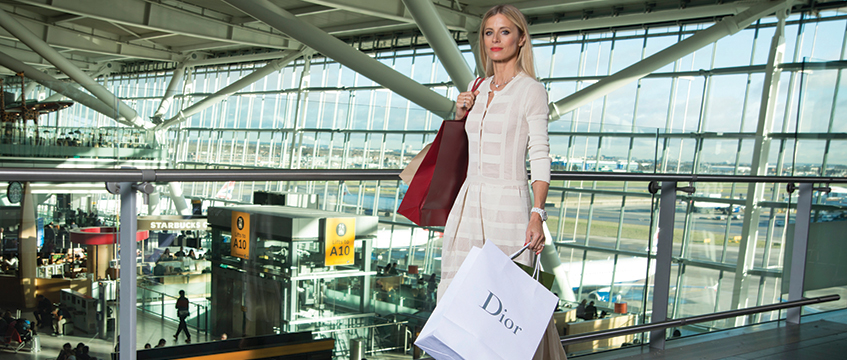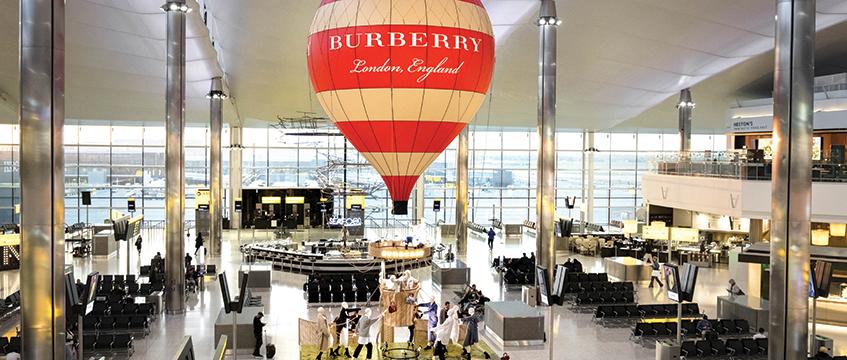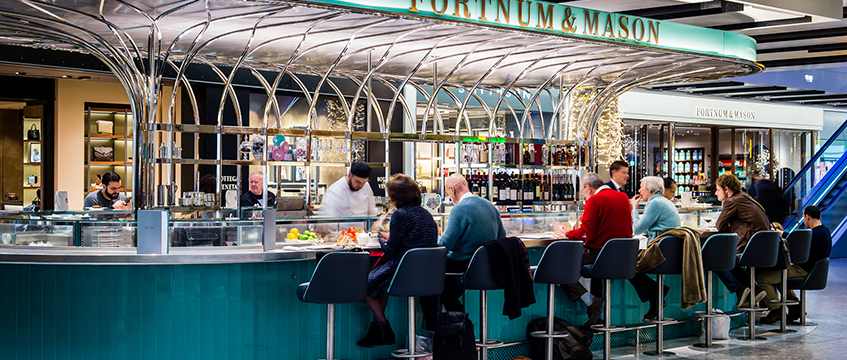After a 20-year pause, European duty free is on its way back. And it could mean a mighty boost to airport retail, writes David Thame.
Abolished in 1999 to meet European single market rules, duty free will return when Britain leaves the European Union in March 2019.
It’s early days, of course. Transitional periods might delay or complicate the return of duty free (although industry bodies are lobbying to prevent this). But the excitement is palpable.
That’s because UK-EU duty free is going to be big business. The 1999 abolition was said to have cost 30,000 UK retail jobs and severely hit airport income. Back then holiday airports like Luton relied heavily on duty free, which accounted for 11% of turnover.
 Much of that floorspace was converted to food and beverage, but a sudden revival could add substantially to UK duty free floorspace. It could also open the prospect of competition for the dominant provider, Dufry/World Duty Free, which is present at 21 UK airports.
Much of that floorspace was converted to food and beverage, but a sudden revival could add substantially to UK duty free floorspace. It could also open the prospect of competition for the dominant provider, Dufry/World Duty Free, which is present at 21 UK airports.
At airports such as Manchester, where Dufry duty free took more than £46m in the last half-year reporting period, growth will be substantial. At smaller airports growth could be astronomic.
Airports have maxed out on alcohol and tobacco floorspace, and that is an offer that is under pressure anyway for legal and social reasons. So the core offer is struggling.”
Lucy O’Shaughnessy is commercial director at Liverpool John Lennon Airport. Around a third of her 32,000 sq ft of airside retail, food and beverage space is duty free, yet it accounts for about 30% of revenue (a fairly standard industry outcome).
However, the scope for growth is considerable. Today just 10% of Liverpool flights are outside Europe, and therefore qualify for the full duty free offer. Post-Brexit, duty free passengers could account for about 80%.
“We are expanding our airside retail – adding another 1,600 sq ft now – but that is driven more by new brands than by Brexit,” she says.
Clearly duty free could mean big changes for short-haul airports such as Liverpool. For Heathrow, with its existing large duty free catchment, it might not mean such a revolution in volumes. The latest figures show Heathrow airport retail revenue up 7.7%, year-on-year, as spend per passenger rises. Duty free contributed £62m to a 2016 first half total of £280m, up 3.3%.
Duty free volumes will go up post-Brexit – but will the product range and customer experience change, too? Close observers say yes, definitely. The arrival at Liverpool of Jo Malone, the upmarket fragrance store, is typical of a move away from the standard duty free offer of booze and fags, and into a higher quality, fashion-based sector.
Alex Avery, head of airports at retail consultancy Pragma, explains: “Airports have maxed out on alcohol and tobacco floorspace, and that is an offer that is under pressure anyway for legal and social reasons. So the core offer is struggling.”
Avery says Asian airports show the way. “Luxury fashion is going to grow in the UK duty free sector, just as it has in Asia. This is vulnerable to currency fluctuations, but you can already see it emerging in regional airports and at Heathrow T5 with Chanel and Louis Vuitton.”
Look at airports like Singapore Changi which now has a two-level whisky tasting space, an impressive branded experience. This is the kind of thing we’ll see more of.”
Avery also says shop size and style will change – perhaps leading to larger, more experience-based units, spiced up by lessons learned from the high street. “Too often the guaranteed footfall of airports has meant a lack of innovation, but look at airports like Singapore Changi which now has a two-level whisky tasting space, an impressive branded experience. This is the kind of thing we’ll see more of.”
Simon Scott, head of international business at Leslie Jones Architects, is in the midst of designing the third runway concourse at Hong Kong International. It is likely to have around 25,000 sq ft of duty free, about a quarter of total retail floorspace. He says the days of heavily shelved and over-lit booze palaces will soon be a bad memory.
“This won’t just be about stacking shelves. It’s going to be more about brands and aspirations. This will require more space as retailers find new ways to connect with passengers – only a very bold duty free retailer would assume it means less,” he says.
“We will see a change from UK duty free based on a low price to a more flexible offer, needing more flexible space. Look at Dubai to see how they have mixed core duty free with impulse purchasing and fashion.”

BNP Paribas Real Estate’s head of international brands, Fiona Hamilton, suggests the revolution could go even further. She says: “Our work with Dublin Airport Central, which includes grade-A office space, as well as public realm for kiosks and transient retail, has shown the move beyond creating pure retail spaces, to creating visionary commercial mixed-used developments that fulfil the growing consumer demand for contextually relevant experiences which deliver the right product at the right time.”
Back in Liverpool, Lucy O’Shaughnessy is pondering the future. “It will be a big sea change, and on the face of it we might want to free up more floor space, but I don’t think we would be expanding duty free exponentially. First we would work the existing floorspace harder,” she says.
Airport duty free is about to change massively. But in which direction it goes is still up in the air.











